March 2024
By Jenny Town
There is a hot debate underway in international policy circles about how to interpret increased talk of war preparations in North Korean rhetoric.
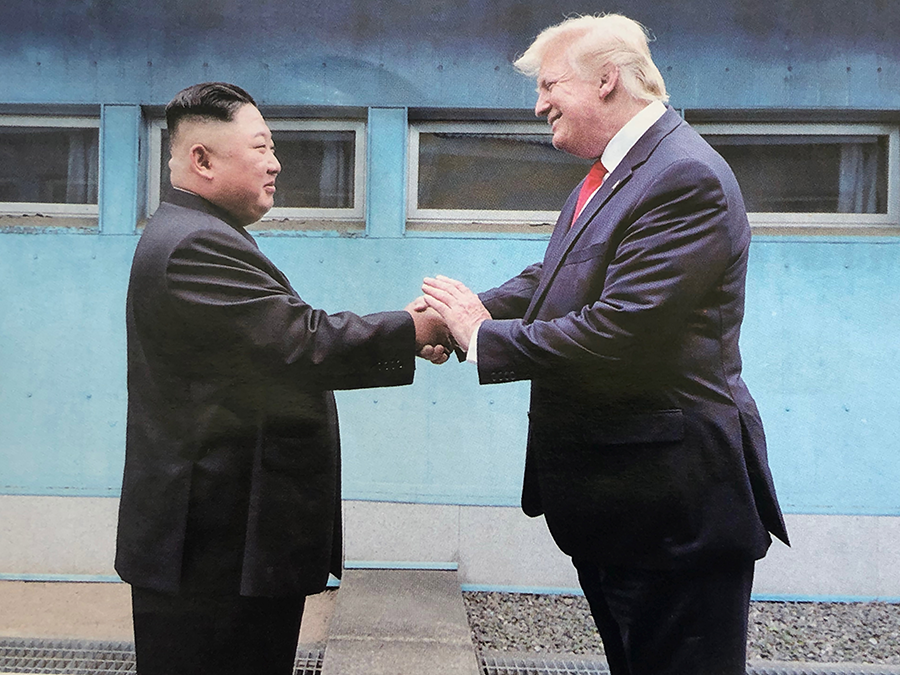 Some analysts suggest a “decision has been made [in Pyongyang] to go to war,” but what a contemporary war on the Korean peninsula would look like is unclear.1 Other analysts refute this prospect of an all-out war. At the same time, they resign themselves to the notion that some kind of limited conflict or overly provocative behavior is likely in the near term, which is to say, actions that could easily escalate into a devastating conflict and potential nuclear use.2
Some analysts suggest a “decision has been made [in Pyongyang] to go to war,” but what a contemporary war on the Korean peninsula would look like is unclear.1 Other analysts refute this prospect of an all-out war. At the same time, they resign themselves to the notion that some kind of limited conflict or overly provocative behavior is likely in the near term, which is to say, actions that could easily escalate into a devastating conflict and potential nuclear use.2
In most of these scenarios, there tends to be an underlying acceptance that this dynamic is too advanced to stop. Despite the Biden administration’s multiple attempts to invite North Korea back into nuclear talks, the U.S. proposals have gone unanswered. In the meantime, South Korea and the United States have bolstered their cooperation not only in conventional capabilities but also in nuclear consultation and planning. They have doubled down on deterrence messaging and drills, demonstrating their combined firepower and reminding Pyongyang of the dire consequences of any kind of attack.
North Korea’s consistent response has been reciprocal deterrence messaging and drills. This power-for-power dynamic has made it difficult for either side to back down or even ease off without looking as if it has ceded ground to the other. The situation is exacerbated by the fact that there are no operative diplomatic channels of communication to clarify, convey, or choreograph deescalatory actions.
With both sides of the Demilitarized Zone (DMZ) emphasizing the need to be ready for war, the question is, Has war become inevitable? This obviously is not the first time tensions have risen to turbulent heights on the Korean peninsula. The last frenzy was in 2017, when North Korean advancements in intercontinental ballistic missile technologies were met by threats of “fire and fury” from U.S. President Donald Trump.3 Although the fury was evident in the various exchanges and insults that characterized that era, fire did not follow.
The flashy diplomacy that came next was dashed in a dramatic fashion, with the failure to secure a first-phase agreement between North Korea and the United States that would kick off a denuclearization process and move the two countries toward more normal relations. Since then, North Korean leader Kim Jong Un has implemented new policies, plans, and laws that demonstrate fundamental changes to his calculus about his nuclear weapons program and his country’s place in an evolving geopolitical landscape.
The level of conviction and decisiveness Kim is showing today raises questions about his endgame. What makes the situation different from 2017 or other moments in history when tensions flared? Does it make “fire” more or less likely in the near future? More importantly, instead of just hunkering down for the fight, what can be done on the diplomatic side to prevent it?
The Shifting Geopolitical Context
The consequences of not making a deal in 2019, when Kim was still willing to negotiate over his nuclear weapons program, have been more serious than after previous negotiations. In the past, agreeing to a first step, even if small, would have laid the foundation for more productive relations and for continued negotiations as progress was made. It also would have created the mechanism for both sides to test each other’s resolve—how far were they willing to go to reap the benefits of better relations? Moreover, with the support of key players, especially South Korea, China, and Russia, the potential for enhancing regional security and stability, establishing confidence-building and security measures, and moving further down the denuclearization path seemed promising.
That moment, however, has passed. At the end of 2019, Kim made clear his disillusionment with dangled promises that relations with the United States could change enough for North Korea to gain benefits. Since then, North Korea has undergone major policy shifts that demonstrate a fundamental change in its worldview. In 2021, for instance, North Korea embraced the suggestion that a “new Cold War” was emerging and quickly got on board.4 As South Korean-U.S. relations grew deeper, North Korea worked to expand its relations with China and Russia on the other side of the ideological paradigm.
By 2022, the North Korean defense minister pledged to undertake “strategic and tactic[al] coordinated operations” with China’s People’s Liberation Army, and Kim touted a level of “strategic and tactical cooperation” with Russia.5 The inclusion of tactical cooperation was new in both instances, going well beyond the historical parameters of their “friendships” over the previous 30 years. In the case of Russia in particular, this change has been consequential.
Within this new Cold War-like alignment, North Korea’s political support has been reciprocated as China and Russia have blocked the passage of new punitive measures against North Korea in international forums. Economic trade and cooperation have resumed and apparently food and medical aid as well, helping boost the North Korean economy as it emerges from its pandemic isolation. Military cooperation with Russia also creates opportunities for quick infusions of hardware and technology to help modernize North Korea’s conventional and weapons of mass destruction (WMD) capabilities.
Moreover, although North Korea may be a problematic partner for China in particular, increasing tensions on their shared border with continued weapons testing and deployment exercises, North Korean actions still fit within a Chinese geopolitical narrative. China’s own concerns about a growing buildup of U.S. military and strategic assets in the region and deepening U.S. alliance cooperation with South Korea and Japan cultivate strategic empathy for Pyongyang’s situation in Beijing.
Reframing North Korean Nuclear Weapons
One of the most significant changes that North Korea has announced since 2019 is how it views its nuclear weapons program. Historically, descriptions of the country’s nuclear weapons were consistently framed as contingent on the United States maintaining its hostile policy against the North, thus leaving the door open to negotiations. In September 2022, when announcing a new nuclear law, however, Kim denounced future negotiations to this end and said that “[w]e have drawn the line of no retreat regarding our nuclear weapons so that there will be no longer any bargaining over them.”6
This new law described the country as a “responsible nuclear weapons state” and laid out five conditions under which it would consider nuclear use, three of which included preemptive clauses. There also is a clause that compels automatic nuclear use in case of leadership decapitation.7 Although much public attention has been focused on the troubling inclusion of potential preemptive nuclear use, there is strong deterrent messaging in the law and an emphasis on how clarity of strategy can help prevent miscalculation by other states with nuclear weapons.
In 2023, Kim announced a new constitutional amendment that “ensures the country’s right to existence and development, deter war and protect regional and global peace by rapidly developing nuclear weapons to a higher level.” He stressed the need for “exponentially boosting the production of nuclear weapons and diversifying the nuclear strike means and deploying them.”8
Enshrining the nuclear weapons strategy and the mandate to continue developing weapons of mass destruction in law has significant implications for future negotiations with North Korea. First, it means that getting back to any kind of denuclearization agenda is going to be enormously more difficult than in the past and will not be even remotely possible until there are major changes in the broader geopolitical environment. These definitive measures will not be reversed easily, especially while other countries in the region continue to build up and modernize their own military capabilities.
It also means that there is no longer any low-hanging fruit to use as a starting point in future negotiations. In the last round of negotiations, for instance, North Korea declared a unilateral moratorium on long-range ballistic missile and nuclear weapons testing to create the right environment for negotiations. It was an easy concession to make. Going forward, even freezes of nuclear testing or actual development activities will require a high price for Pyongyang to justify violating its constitution. Although it is not impossible that the right scenario could prove appealing enough for Kim to take such steps, it certainly will not be the kind of easy concession it has been previously.
South Korea as Principal Enemy
One of the newest policy shifts involves how North Korea views its relations with South Korea. At a recent meeting of the Central Committee of the Workers’ Party of Korea, Kim announced a fundamental change in the handling of North-South relations and rejected the notion that peaceful reunification could be achieved.9 Since then, a series of moves and statements have rebranded South Korea as the North’s principal enemy and reassigned the management of relations under the rubric of foreign policy rather than being treated as intra-Korean affairs.
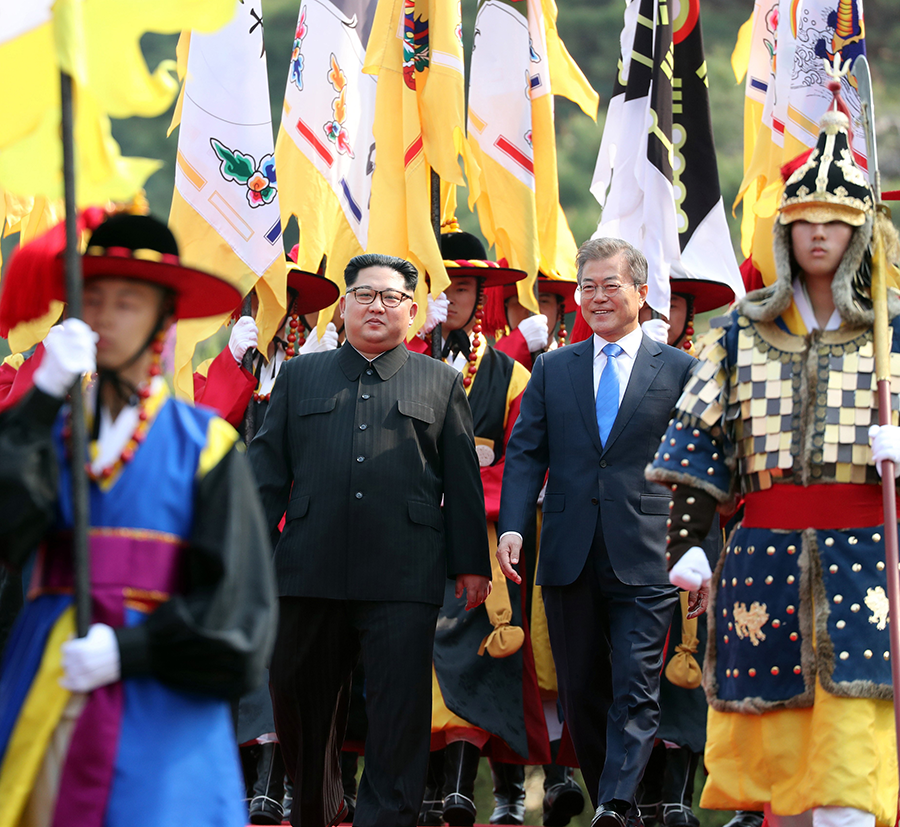 The exact goal of such a policy shift remains unclear. Some analysts suggest it makes it easier to justify taking military actions against South Korea in the future, including the use of nuclear weapons. Yet, North Korea always has had South Korea in its sight when building its nuclear weapons program, long before it developed strategic-range delivery systems, and has rarely hesitated to threaten their use against Seoul.
The exact goal of such a policy shift remains unclear. Some analysts suggest it makes it easier to justify taking military actions against South Korea in the future, including the use of nuclear weapons. Yet, North Korea always has had South Korea in its sight when building its nuclear weapons program, long before it developed strategic-range delivery systems, and has rarely hesitated to threaten their use against Seoul.
Subsequent rhetoric and actions relay a strong sense of disillusionment that North-South relations ever could move forward independent from the North’s broader international relations. The recent decision to revoke the law on inter-Korean economic cooperation, for instance, cuts at the heart of the matter. The North-South joint tourism zone at Mount Kumgang has been shut down since 2008, when a South Korean tourist was shot and killed by a North Korean guard for straying into a restricted zone. The Kaesong Industrial Complex, where several South Korean companies once employed around 55,000 North Korean workers, has been closed since 2016 due to political tensions. The revival of these initiatives has been a goal of both Koreas for several years, but sanctions remain an obstacle to resuming business.
The North-South joint railroad project, which South Korean President Moon Jae-in hoped to revive under the Panmunjom Declaration in 2018, never received the sanctions exemptions that it needed to make any substantial progress. Throughout 2018 and 2019, Kim urged Moon not to let external forces interfere in Korean affairs. Moon’s failure to convince the international community to carve out space for inter-Korean affairs to move forward seems to have reinforced North Korea’s perception of South Korea as a U.S. puppet state.
Designating South Korea as the North’s principal enemy certainly helps further justify building up arms against it, especially when Seoul is expanding its defense budgets, enhancing its conventional capabilities, and strengthening its extended deterrence capabilities against Pyongyang’s growing WMD stockpile. Moreover, preserving special relations made sense when there was a shared vision of unification, such as the one defined in the Joint Declaration of June 15, 2000, which made space for both governments to coexist in a confederation model.10 Yet, this is no longer the case. On many occasions, South Korea has talked about a vision of unification under a liberal democratic government, which by default poses an existential threat to the Kim regime.
Reframing relations with South Korea at this time also facilitates Kim’s domestic agenda. Eliminating institutions dedicated to inter-Korean cooperation enables Kim to redirect national resources from perceived lost causes to initiatives that are a higher priority and have a higher chance of success within his ambitious economic goals, especially in year four of a five-year plan.
Implications for Diplomacy
In the near term, there does not seem to be a real window of opportunity for restarting a North Korean-U.S. dialogue, especially 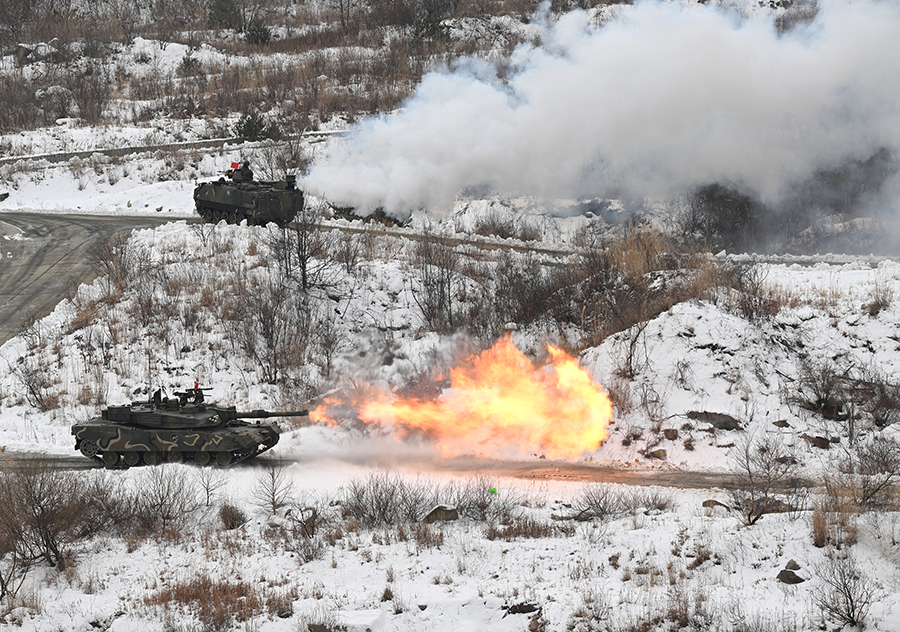 not without a major recalibration of the U.S. approach toward Pyongyang. If the United States intends to maintain a denuclearization-centered approach, meaning that eventually eliminating the nuclear program is the ultimate purpose of negotiations, then the window for diplomacy is closed. North Korea has enshrined its nuclear program and the continued development of weapons of mass destruction into its domestic laws in a way that will not be reversed easily. Furthermore, the current geopolitical environment affords Pyongyang ample political cover and other beneficial relationships to stay on its current course and still grow stronger.
not without a major recalibration of the U.S. approach toward Pyongyang. If the United States intends to maintain a denuclearization-centered approach, meaning that eventually eliminating the nuclear program is the ultimate purpose of negotiations, then the window for diplomacy is closed. North Korea has enshrined its nuclear program and the continued development of weapons of mass destruction into its domestic laws in a way that will not be reversed easily. Furthermore, the current geopolitical environment affords Pyongyang ample political cover and other beneficial relationships to stay on its current course and still grow stronger.
Moreover, even approaches that broach the concept of arms control or risk reduction—concepts that North Korea might have entertained in the past—are now likely to fall on deaf ears. The potential for North Korea to agree to any kind of limitation or reduction of its arsenals will first require drastic changes to the broader geopolitical environment toward a more positive, more stable, less conflict-prone security situation. Such an environment is unlikely to be brokered without reciprocal military concessions from other key actors, especially South Korea, either alone or within the context of its alliance with the United States. The days of military concessions from North Korea in exchange for symbolic gestures such as food aid are gone for now, given all that it is able to secure from more like-minded states.
North Korea’s robust cooperation with Russia also is a major new obstacle for reviving talks with the United States. Kim’s open and consistent support for the full-scale Russian war in Ukraine has paid off. In addition to reciprocal political support at the United Nations and in other international forums, Russia appears to see a role for North Korea in its broader war against the West, where Chinese support tends to waver. This includes using North Korea as an arms supplier for Russia’s current war-fighting in Ukraine and as a military partner against the Western or U.S.-led world order.
Russia appears willing to do more than buy North Korean weapons with cash or via barter. Russia is investing in bolstering North Korea’s overall military capabilities, keeping U.S. attention divided, ensuring that the stakes for South Korea’s further involvement in Ukraine remain high, and guaranteeing that Russia consistently has a nuclear-armed partner at its side.
Moscow’s willingness to provide military cooperation, technology transfer, and deepening economic cooperation makes it the ultimate partner for Pyongyang and currently its top foreign policy priority. How long that priority lasts will depend on how long Russia is willing to engage in the same level of cooperation as now. If or when Russia’s favor fades, North Korea’s attention is likely to pivot back toward China or other options, depending on where opportunity is most abundant. In the meantime, no other country is going to be willing to offer as much as what Russia is doing now, especially the military cooperation, which limits room for further diplomacy, because North Korea will focus its resources, including diplomatic resources, where it sees greatest value.
The U.S. presidential election year is also an obstacle to cultivating a new diplomatic opening with North Korea. Even if the Biden administration were willing to make major changes to its approach, there is no credible reason to believe that any new strategy would be sustainable if President Joe Biden is defeated and a new administration takes office.
Although Pyongyang may seem to favor a return of Trump to the White House, this does not mean that Kim will come running back to negotiations with him either. The level of risk Kim was willing to take in 2018 and 2019 to meet with Trump multiple times and build up domestic expectation for success was enormously high, and his failure to secure an expected breakthrough agreement was consequential.
Since then, the shifts in North Korean policies reflect a more risk-averse strategy, directing resources and diplomatic efforts where tangible results can be brokered quickly with little to no political risk. The perception of risk for trying to secure some level of sanctions relief through negotiations with the United States will probably remain high regardless of whether it is a second Biden or Trump term. Any agreement on sanctions relief will surely require concessions on North Korea’s nuclear program. This may be too politically costly for Kim, especially when North Korea has had successes in cultivating deeper relations with states that will disregard or blatantly violate the sanctions regime while continuing to advance its nuclear goals.
A Way Ahead?
In the past, the United States used to describe its policy approach as working to narrow North Korea’s choices. The fact remains that Pyongyang still has choices, but more often than not, these choices push it further away from the kind of behavior and relationships that the international community would like to see. As North Korea’s commercial trade opportunities have been restricted, for instance, its cybercrime and cryptocurrency schemes have increased. Although these illicit efforts have been enormously successful for Pyongyang, with estimated revenues of $3 billion in 2023, this income comes with no social benefit.11 The North Korean government coffers have ample resources for weapons development and other priority initiatives, but textile workers, fishermen, and other laborers suffer without paid work.
Restarting diplomacy with North Korea will require more than open invitations to negotiate. As politically risk adverse and transactionally minded as North Korea tends to be, a new approach will need to build confidence that there is actually a reason to negotiate. That means demonstrating that results are possible.
In the past, when North Korea was still willing to negotiate, subtle, unilateral gestures might have signaled a new opportunity. Such actions could have included elevating the role of the U.S. special representative for North Korea back to a full-time position to strategize about new approaches, liaise with the policy community, and coordinate interagency efforts and be proactive in trying to create diplomatic openings with the North. Other initiatives could be meaningful, such as lifting the restrictions on U.S. citizens’ travel to North Korea; clearing out obstacles to informal and humanitarian engagement, such as those outlined in the Enhancing North Korea Humanitarian Assistance Act; refraining from reactive South Korean-U.S. joint military exercises and overly aggressive demonstrations of power; and moderating U.S. messaging about extended deterrence to avoid excessive and expletive language.
Although none of these moves in isolation were likely to jump-start diplomacy, together they could have worked to signal that U.S. policy is agile and adaptive and that Washington was prepared for diplomacy on multiple levels if and when the opportunity arose. Unfortunately, none of these options were pursued.
These are all still useful measures to consider in any new policy formation, but they are not nearly enough to build North Korea’s confidence that there is a reason to return to negotiations with the United States. Under the current conditions, creating new diplomatic opportunities will require political bravery and leadership to take steps that are not predicated on North Korean actions but that will reestablish an inclination toward more positive choices within North Korea’s calculus.
For instance, rather than trying to completely cut off North Korea’s revenue streams, there is value in restoring some of the commercial activities, such as textile or seafood exports, that provide inherent social benefit to the North Korean people in the form of jobs. To make this politically more palatable, policymakers could consider a sanctions swap arrangement: lifting one or two sanctions on legal, commercial activity while imposing new sanctions on illicit cyberactivities. Doing this would show that sanctions can be lifted and results are possible in future negotiations and are not meant to hurt the North Korean people, while the international community works to crack down on North Korea’s illicit behaviors in a targeted way.
Such an approach would provide Kim with pathways and incentives to move back toward more normal trade activity and perhaps give him a reason to reengage in economic reform attempts. Such a move also could help build cooperation with China and perhaps Russia, meeting them halfway on their previous attempts to broker sanctions relief for North Korea for humanitarian purposes. Finding common ground with Beijing at least could be a first step in developing a more coordinated strategy toward North Korea that enables more productive choices for all the parties involved.
The international community is always quick to react to every provocative action North Korea takes, but it remains relatively silent when North Korea demonstrates acts of goodwill. Although they may be few and far between, these acts should be highlighted in a more prominent way when they happen, to meet goodwill with goodwill and capitalize on the moment. For instance, the recent return of U.S. Army Private Travis King without incident took diplomatic coordination involving multiple stakeholders and was the best possible outcome for all parties involved.12 North Korea made no condition for his return, but the lack of a public, positive acknowledgment or act was a missed diplomatic opportunity.
Another productive approach would involve developing a better understanding within U.S. alliances about where there is and is not room for concessions in the future. Although it may be difficult to imagine now, any kind of denuclearization or arms control negotiation will require reciprocal security-related measures, most likely from South Korea and the United States. Regular discussions within the alliance about where there may be redlines and where there is room to maneuver could help prevent them from fearing uncoordinated offers or actions during future negotiations with North Korea.
In the long run, the United States will need to come to terms with the broader challenge that North Korea poses, that is, how to deal with a nonpeer nuclear adversary in a coherent way across the various instruments of national power. If the goal is simply to manage the threat, then perhaps the current approach has merit: Washington and its allies have responded to Pyongyang’s increasing capabilities with their own increasing capabilities and cooperation.
If the goal is to reduce the threat or encourage disarmament, however, then this approach has failed because North Korea’s nuclear program today is robust with strategic and tactical capabilities. Relying on deterrence messaging and reminding the North of the overwhelming power of the United States and its allies combined has not had the desired effect. Instead, it has continued to feed into the North’s justification for continued development.
Rebuilding diplomacy with North Korea is necessary to reduce the risks of nuclear conflict on the Korean peninsula, whether intentional or accidental, and to curb endless arms racing in this vital, dynamic region. To realize such a goal and carry it forward will take creative, concerted, and persistent efforts and a hefty dose of political leadership.
ENDNOTES
1. Robert L. Carlin and Siegfried S. Hecker, “Is Kim Jong Un Preparing for War?,” 38 North, January 11, 2024., https://www.38north.org/2024/01/is-kim-jong-un-preparing-for-war/.
2. Markus V. Gralauskas, “The Rising Threat of Kim Jong Un’s North Korea,” Newsweek, January 30, 2024.
3. Peter Baker and Choe Sang-Hun, “Trump Threatens ‘Fire and Fury’ Against North Korea If It Endangers U.S.,” The New York Times, August 8, 2017.
4. Rachel Minyoung Lee, “The Real Significance of North Korea’s Recent Military Activities,” 38 North, November 2, 2022, https://www.38north.org/2022/11/the-real-significance-of-north-koreas-recent-military-activities/.
5. Ibid.
6. “Respected Comrade Kim Jong Un Makes Policy Speech at Seventh Session of the 14th SPA of DPRK,” Korean Central News Agency, September 10, 2022, http://kcna.kp/en/article/q/15f336993bdcb97a22f50fa590e6bc72.kcmsf.
7. “Law on DPRK’s Policy on Nuclear Forces Promulgated,” Korean Central News Agency, September 9, 2022, http://kcna.kp/en/article/q/5f0e629e6d35b7e3154b4226597df4b8.kcmsf.
8. “Respected Comrade Kim Jong Un Makes Speech at 9th Session of 14th SPA,” Rodong Sinmun, n.d., http://www.rodong.rep.kp/en/index.php?MTVAMjAyMy0wOS0yOC1IMDA1QA== (accessed February 13, 2024).
9. Ruediger Frank, “North Korea’s New Unification Policy: Implications and Pitfalls,” 38 North, January 11, 2024, https://www.38north.org/2024/01/north-koreas-new-unification-policy-implications-and-pitfalls/.
10. “2000 Inter-Korean Summit,” KBS World Radio, n.d., https://world.kbs.co.kr/special/northkorea/contents/archives/summit/summit_2000.htm?lang=e (accessed February 13, 2024).
11. Michelle Nichols, “Exclusive: UN Experts Investigate 58 Cyberattacks Worth $3 Bln by North Korea,” Reuters, February 8, 2024.
12. Chantal Da Silva, “American Soldier Travis King Arrives Back in the U.S. After Being Expelled From North Korea,” NBC News, September 28, 2023.
Jenny Town is a senior fellow at the Henry L. Stimson Center and co-founder and director of 38 North.
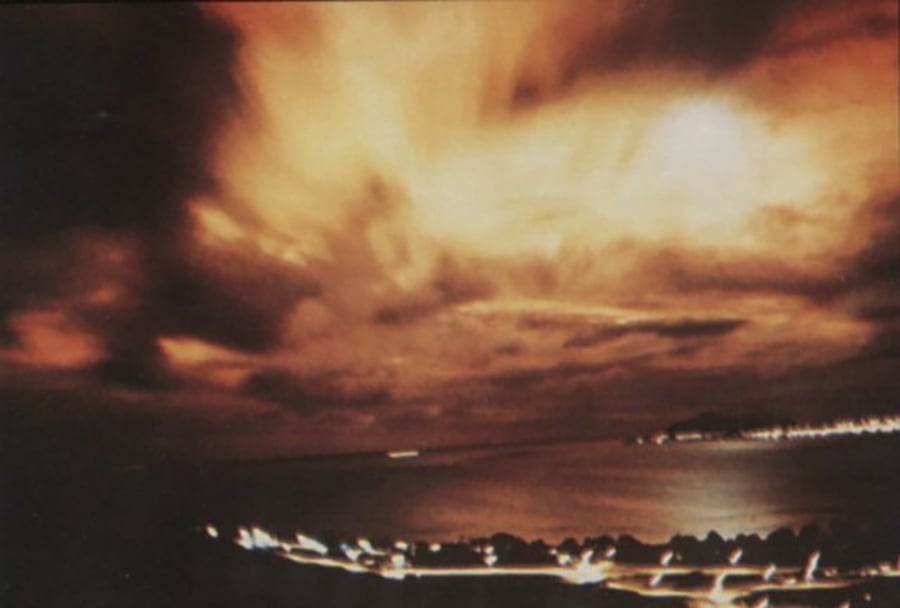 The White House confirmed on Feb. 15 that U.S. intelligence uncovered evidence that Russia is developing an ASAT weapon that “would be a violation of the Outer Space Treaty, to which more than 130 countries have signed up to, including Russia.” Russian President Vladimir Putin issued a nondenial denial, claiming on Feb. 20 that Russia remains “categorically against…the placement of nuclear weapons in space.”
The White House confirmed on Feb. 15 that U.S. intelligence uncovered evidence that Russia is developing an ASAT weapon that “would be a violation of the Outer Space Treaty, to which more than 130 countries have signed up to, including Russia.” Russian President Vladimir Putin issued a nondenial denial, claiming on Feb. 20 that Russia remains “categorically against…the placement of nuclear weapons in space.”




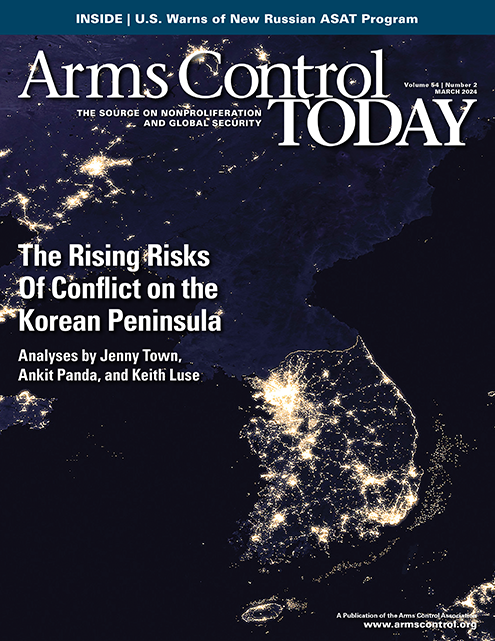
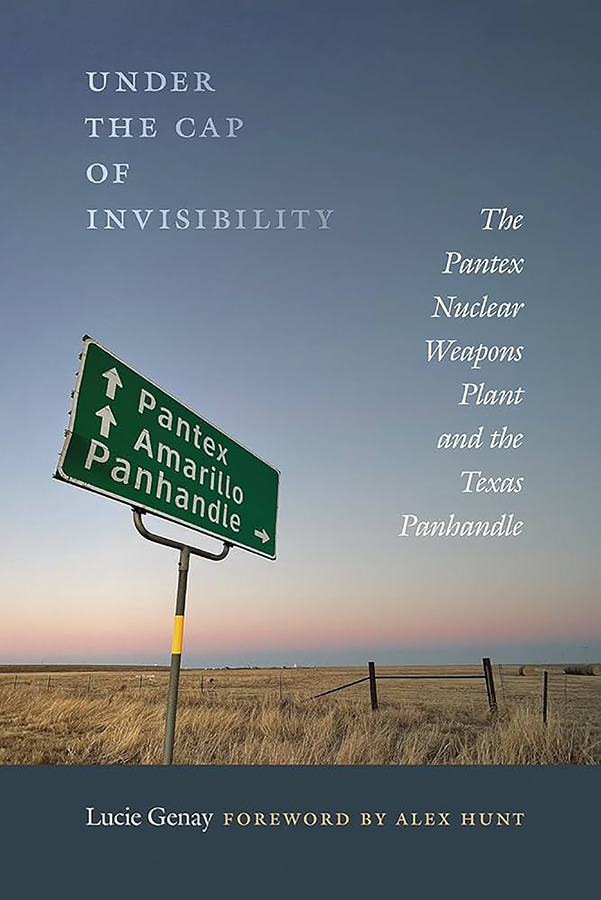 Under the Cap of Invisibility: The Pantex Nuclear Weapons Plant and the Texas Panhandle
Under the Cap of Invisibility: The Pantex Nuclear Weapons Plant and the Texas Panhandle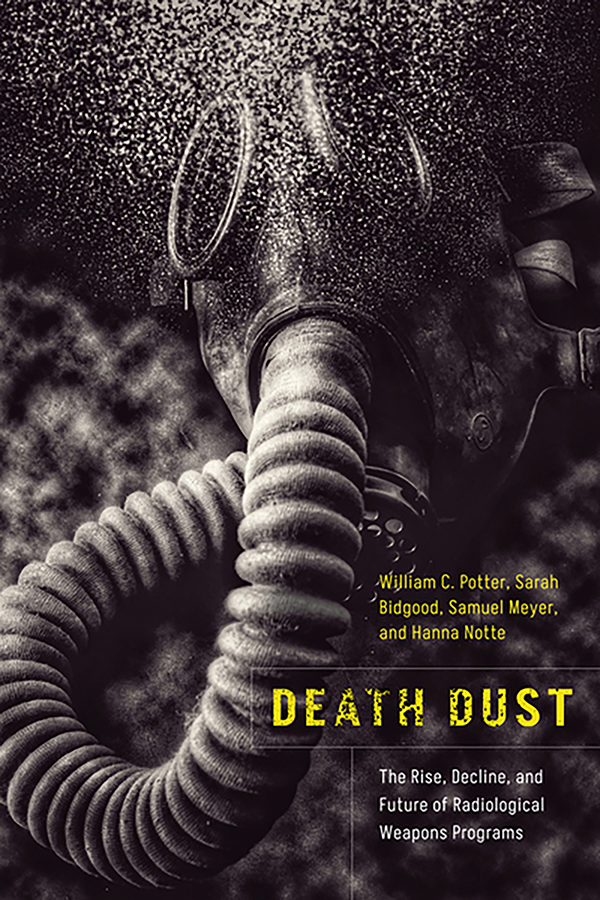 Death Dust: The Rise, Decline, and Future of Radiological Weapons Programs
Death Dust: The Rise, Decline, and Future of Radiological Weapons Programs Some analysts suggest a “decision has been made [in Pyongyang] to go to war,” but what a contemporary war on the Korean peninsula would look like is unclear.
Some analysts suggest a “decision has been made [in Pyongyang] to go to war,” but what a contemporary war on the Korean peninsula would look like is unclear. The exact goal of such a policy shift remains unclear. Some analysts suggest it makes it easier to justify taking military actions against South Korea in the future, including the use of nuclear weapons. Yet, North Korea always has had South Korea in its sight when building its nuclear weapons program, long before it developed strategic-range delivery systems, and has rarely hesitated to threaten their use against Seoul.
The exact goal of such a policy shift remains unclear. Some analysts suggest it makes it easier to justify taking military actions against South Korea in the future, including the use of nuclear weapons. Yet, North Korea always has had South Korea in its sight when building its nuclear weapons program, long before it developed strategic-range delivery systems, and has rarely hesitated to threaten their use against Seoul. not without a major recalibration of the U.S. approach toward Pyongyang. If the United States intends to maintain a denuclearization-centered approach, meaning that eventually eliminating the nuclear program is the ultimate purpose of negotiations, then the window for diplomacy is closed. North Korea has enshrined its nuclear program and the continued development of weapons of mass destruction into its domestic laws in a way that will not be reversed easily. Furthermore, the current geopolitical environment affords Pyongyang ample political cover and other beneficial relationships to stay on its current course and still grow stronger.
not without a major recalibration of the U.S. approach toward Pyongyang. If the United States intends to maintain a denuclearization-centered approach, meaning that eventually eliminating the nuclear program is the ultimate purpose of negotiations, then the window for diplomacy is closed. North Korea has enshrined its nuclear program and the continued development of weapons of mass destruction into its domestic laws in a way that will not be reversed easily. Furthermore, the current geopolitical environment affords Pyongyang ample political cover and other beneficial relationships to stay on its current course and still grow stronger.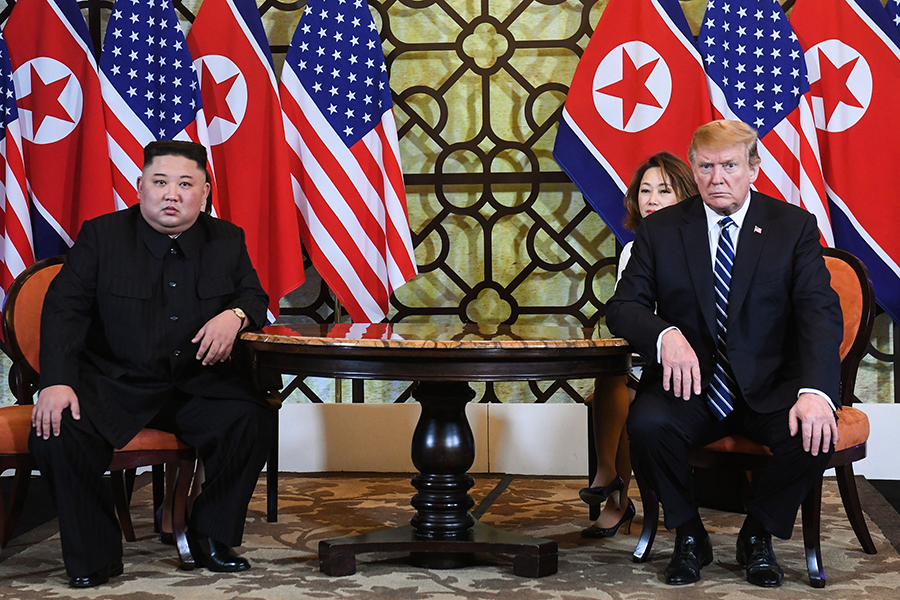 Beginning in 2021, North Korea explicitly stated an intention to develop tactical nuclear weapons, sharply intensifying the perceived threat in South Korea. Since then, Pyongyang has developed an array of new short-range nuclear delivery systems, rendering its ambitions more credible. North Korean leader Kim Jong Un, meanwhile, has indicated that many of these short-range systems will be deployed with so-called frontline units of the Korean People’s Army. Although Kim remains the sole authority on nuclear weapons use in North Korea, he has indicated further that there may be conditions under which the authority to use nuclear weapons could devolve to military commanders. One such condition, outlined in a September 2022 law, could be the degradation of North Korea’s nuclear command-and-control systems in a conflict or the death of the country’s leader. Either circumstance could prompt an “automatic and immediate” nuclear retaliatory attack.
Beginning in 2021, North Korea explicitly stated an intention to develop tactical nuclear weapons, sharply intensifying the perceived threat in South Korea. Since then, Pyongyang has developed an array of new short-range nuclear delivery systems, rendering its ambitions more credible. North Korean leader Kim Jong Un, meanwhile, has indicated that many of these short-range systems will be deployed with so-called frontline units of the Korean People’s Army. Although Kim remains the sole authority on nuclear weapons use in North Korea, he has indicated further that there may be conditions under which the authority to use nuclear weapons could devolve to military commanders. One such condition, outlined in a September 2022 law, could be the degradation of North Korea’s nuclear command-and-control systems in a conflict or the death of the country’s leader. Either circumstance could prompt an “automatic and immediate” nuclear retaliatory attack.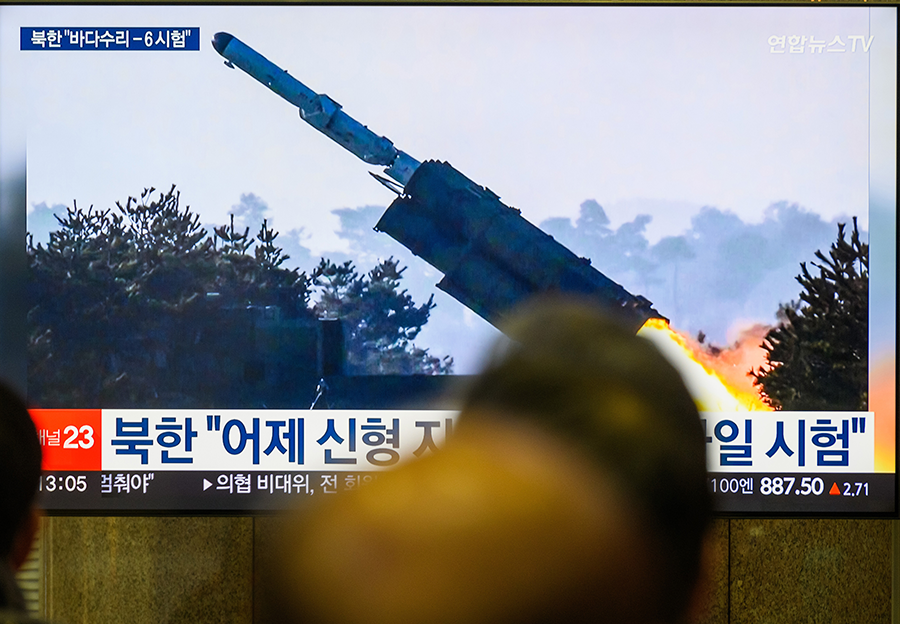 The diversity of North Korea’s nuclear forces reached breathtaking levels as of early 2024. Pyongyang has indicated that it is actively pursuing everything from lake-submerged, short-range ballistic missile launchers to fixed silos to an autonomous, underwater, nuclear-armed torpedo to rail-mobile missile launchers to submarine-launched cruise missiles.
The diversity of North Korea’s nuclear forces reached breathtaking levels as of early 2024. Pyongyang has indicated that it is actively pursuing everything from lake-submerged, short-range ballistic missile launchers to fixed silos to an autonomous, underwater, nuclear-armed torpedo to rail-mobile missile launchers to submarine-launched cruise missiles.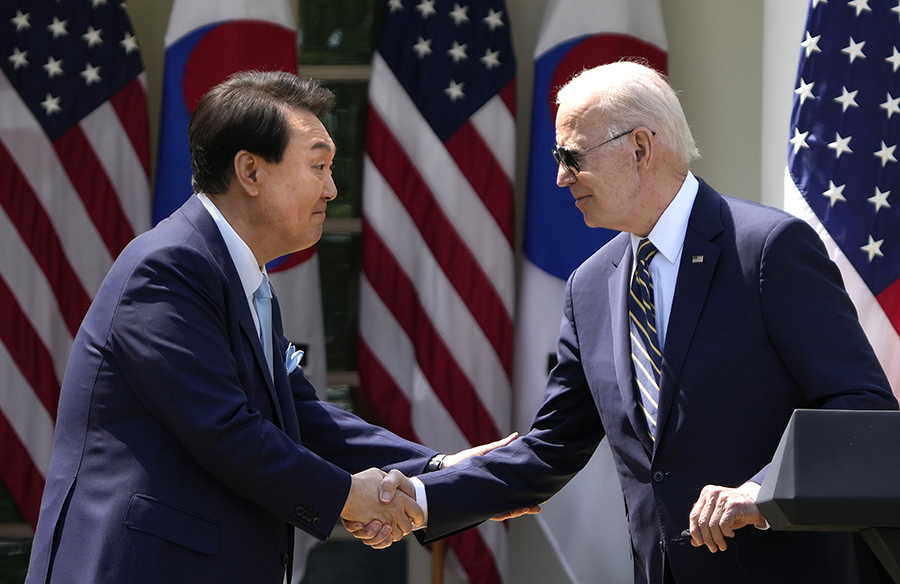 Second, the United States can eliminate a prominent source of use-it-or-lose-it pressures for North Korea. Under the Trump administration, the United States publicized a counterproductive effort to seek “left-of-launch” techniques that could disable North Korean missiles prior to their launch in a conflict.
Second, the United States can eliminate a prominent source of use-it-or-lose-it pressures for North Korea. Under the Trump administration, the United States publicized a counterproductive effort to seek “left-of-launch” techniques that could disable North Korean missiles prior to their launch in a conflict.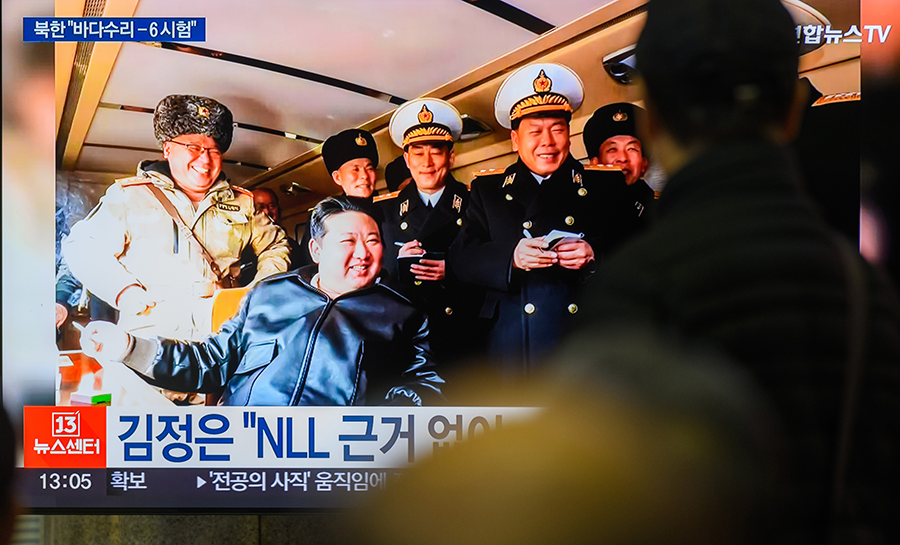 Although U.S. and Soviet forces were sent to intercept the bombers, launched by accident due to a fault in the electronic system, they failed. The U.S. president, portrayed by Henry Fonda, simultaneously ordered the destruction of New York City in a desperate move to prove that the U.S. attack was a mistake and thus prevent all-out nuclear war between the two nuclear-armed countries.
Although U.S. and Soviet forces were sent to intercept the bombers, launched by accident due to a fault in the electronic system, they failed. The U.S. president, portrayed by Henry Fonda, simultaneously ordered the destruction of New York City in a desperate move to prove that the U.S. attack was a mistake and thus prevent all-out nuclear war between the two nuclear-armed countries.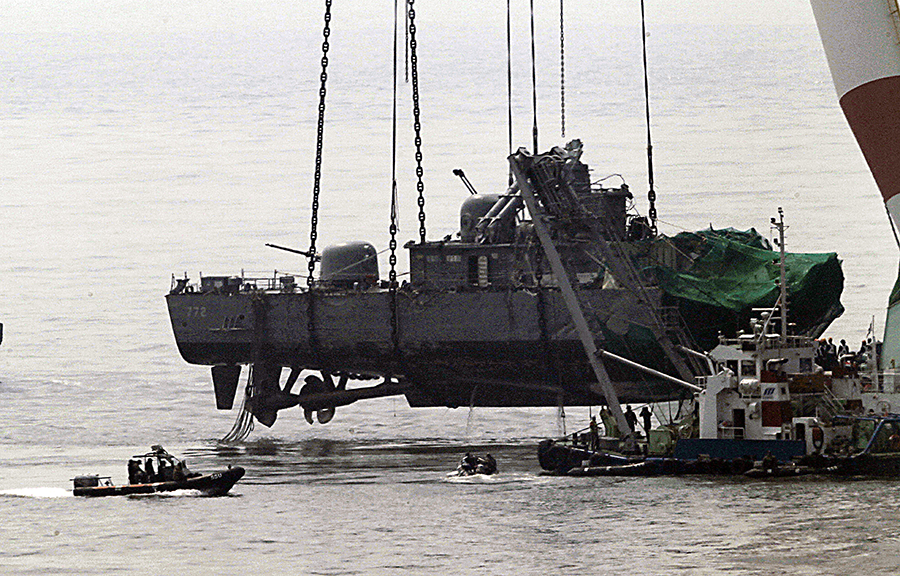 There is another possible destructive outcome as the North Korean leader seeks to achieve his fullest satisfaction and reclaim his self-esteem after the summit debacle. Kim may be compelled to extract a pound of flesh such as happened in 2010 when the South Korean naval vessel Cheonan sank and nearly 50 sailors died after an attack that Seoul blamed on Pyongyang. The North Korean leader may be planning another surgical strike, mistakenly believing that any South Korean or U.S. response would be limited and manageable.
There is another possible destructive outcome as the North Korean leader seeks to achieve his fullest satisfaction and reclaim his self-esteem after the summit debacle. Kim may be compelled to extract a pound of flesh such as happened in 2010 when the South Korean naval vessel Cheonan sank and nearly 50 sailors died after an attack that Seoul blamed on Pyongyang. The North Korean leader may be planning another surgical strike, mistakenly believing that any South Korean or U.S. response would be limited and manageable. Despite this gruesome history, some North Korean elders, especially those who survived the Korean War, may welcome a conflict now even knowing that their deaths would be sealed by a U.S. response to a North Korean nuclear first strike. The revenge of spilled U.S. blood would usher in their long-sought personal peace. For this reason, the conventional wisdom among some national security experts in the United States and South Korea that North Korea is unlikely to launch a preemptive attack on South Korea or on U.S interests in the region is farcical.
Despite this gruesome history, some North Korean elders, especially those who survived the Korean War, may welcome a conflict now even knowing that their deaths would be sealed by a U.S. response to a North Korean nuclear first strike. The revenge of spilled U.S. blood would usher in their long-sought personal peace. For this reason, the conventional wisdom among some national security experts in the United States and South Korea that North Korea is unlikely to launch a preemptive attack on South Korea or on U.S interests in the region is farcical.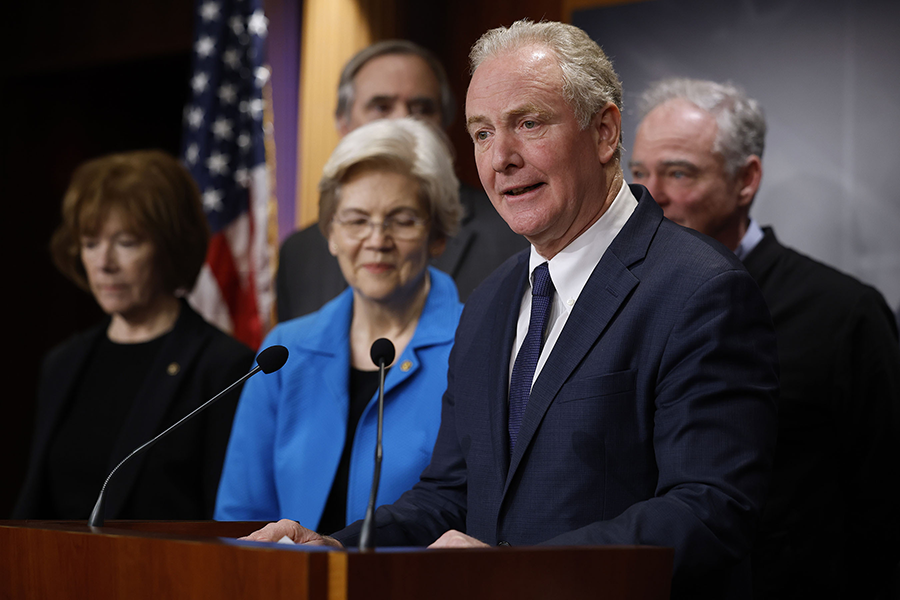 NSM-20 grew out of an amendment to the supplemental funding package for Ukraine and Israel, introduced by Senator Chris Van Hollen (D-Md.) in December that gained momentum as 18 Democratic senators joined as co-sponsors.
NSM-20 grew out of an amendment to the supplemental funding package for Ukraine and Israel, introduced by Senator Chris Van Hollen (D-Md.) in December that gained momentum as 18 Democratic senators joined as co-sponsors. Regardless, the war in Gaza has ushered in serious doubts about whether the commitments outlined in Biden’s conventional arms transfer policy actually matter. Human rights organizations have documented numerous instances of possible war crimes in Gaza. Josh Paul, who formerly directed congressional affairs at the Department of State bureau responsible for arms sales, has repeatedly asserted that the Biden administration is not adhering to the standard.
Regardless, the war in Gaza has ushered in serious doubts about whether the commitments outlined in Biden’s conventional arms transfer policy actually matter. Human rights organizations have documented numerous instances of possible war crimes in Gaza. Josh Paul, who formerly directed congressional affairs at the Department of State bureau responsible for arms sales, has repeatedly asserted that the Biden administration is not adhering to the standard. Apocalypse Television: How ‘The Day After’ Helped End the Cold War
Apocalypse Television: How ‘The Day After’ Helped End the Cold War Was “The Day After” a success? That depends on the definition of success. When millions of people are watching the same television movie about nuclear war and it is still being discussed 40 years later, would that not constitute success? Combined with the June 1982 rally and the nuclear freeze movement, Reagan clearly was aware of and affected by these developments, which in part motivated him to change course, sign the Intermediate-Range Nuclear Forces Treaty in 1987, and argue that a nuclear war cannot be won and must never be fought. Moreover, there are no clearer examples of the success and legacy of “The Day After” than the fact that we are all alive right now and that the second meeting of the states-parties to the Treaty on the Prohibition of Nuclear Weapons recently concluded.
Was “The Day After” a success? That depends on the definition of success. When millions of people are watching the same television movie about nuclear war and it is still being discussed 40 years later, would that not constitute success? Combined with the June 1982 rally and the nuclear freeze movement, Reagan clearly was aware of and affected by these developments, which in part motivated him to change course, sign the Intermediate-Range Nuclear Forces Treaty in 1987, and argue that a nuclear war cannot be won and must never be fought. Moreover, there are no clearer examples of the success and legacy of “The Day After” than the fact that we are all alive right now and that the second meeting of the states-parties to the Treaty on the Prohibition of Nuclear Weapons recently concluded.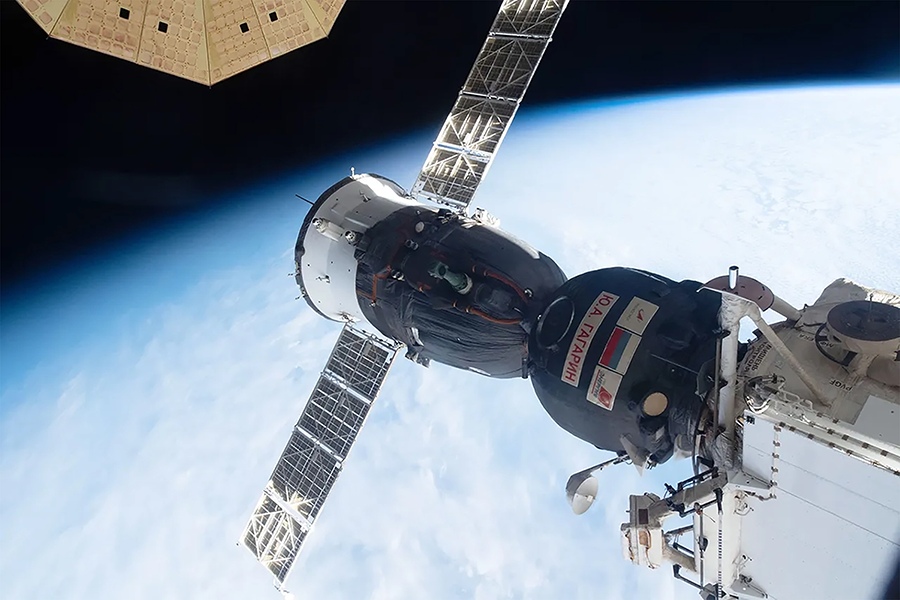 National Security Advisor Jake Sullivan briefed select members of Congress on new U.S. intelligence about the system on Feb. 15, and later that day, White House spokesperson John Kirby confirmed to reporters that the system is “related to an anti-satellite weapon that Russia is developing.”
National Security Advisor Jake Sullivan briefed select members of Congress on new U.S. intelligence about the system on Feb. 15, and later that day, White House spokesperson John Kirby confirmed to reporters that the system is “related to an anti-satellite weapon that Russia is developing.”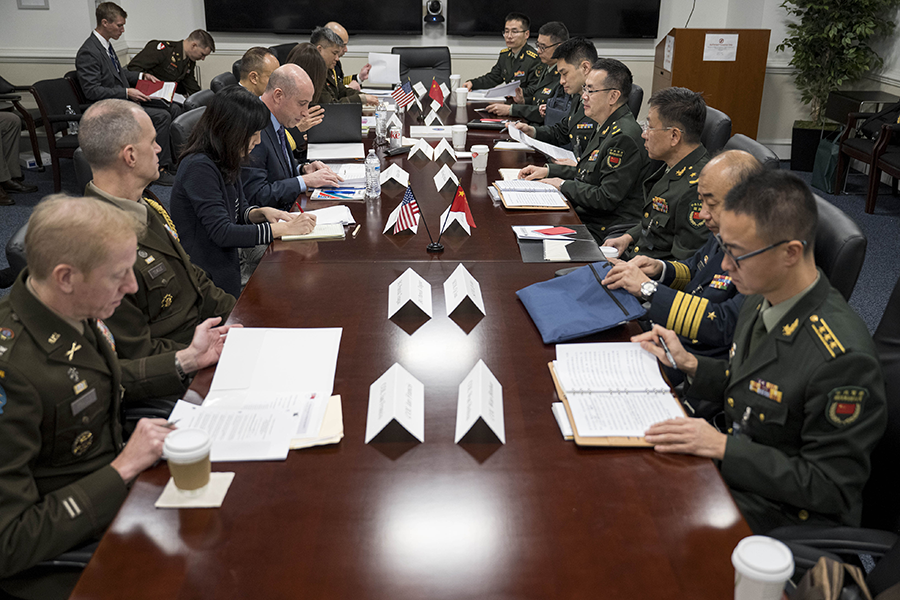 Two days of meetings, called the China-U.S. defense policy coordination talks, took place Jan. 8-9 at the Pentagon. It was the first formal in-person encounter between the two militaries since January 2020.
Two days of meetings, called the China-U.S. defense policy coordination talks, took place Jan. 8-9 at the Pentagon. It was the first formal in-person encounter between the two militaries since January 2020.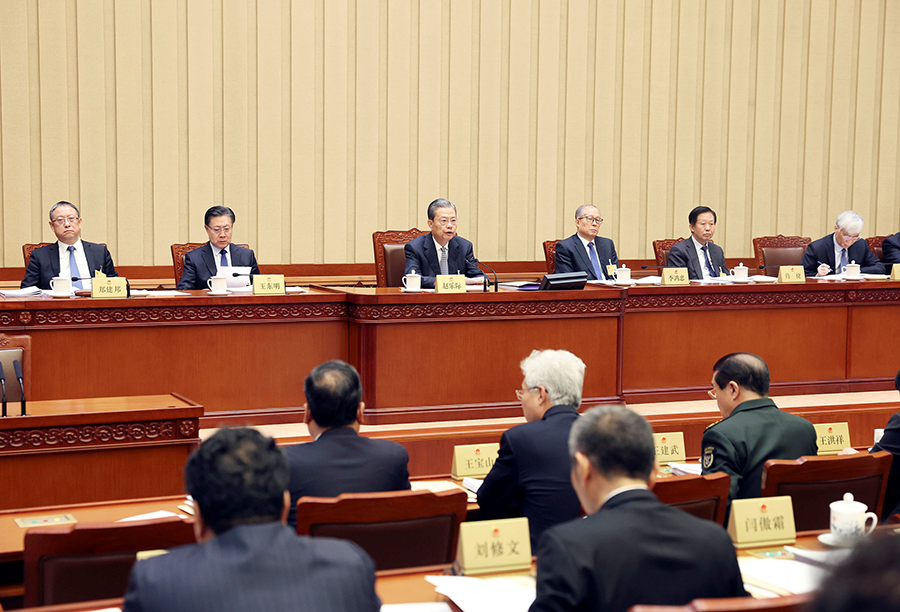 The Standing Committee of the National People’s Congress, China’s national legislative body, announced on Dec. 29 the dismissal of nine senior military officials of the People’s Liberation Army (PLA). Some of those affected were senior members of the PLA Rocket Force, which is responsible for overseeing the country’s conventional and nuclear land-based missiles.
The Standing Committee of the National People’s Congress, China’s national legislative body, announced on Dec. 29 the dismissal of nine senior military officials of the People’s Liberation Army (PLA). Some of those affected were senior members of the PLA Rocket Force, which is responsible for overseeing the country’s conventional and nuclear land-based missiles.